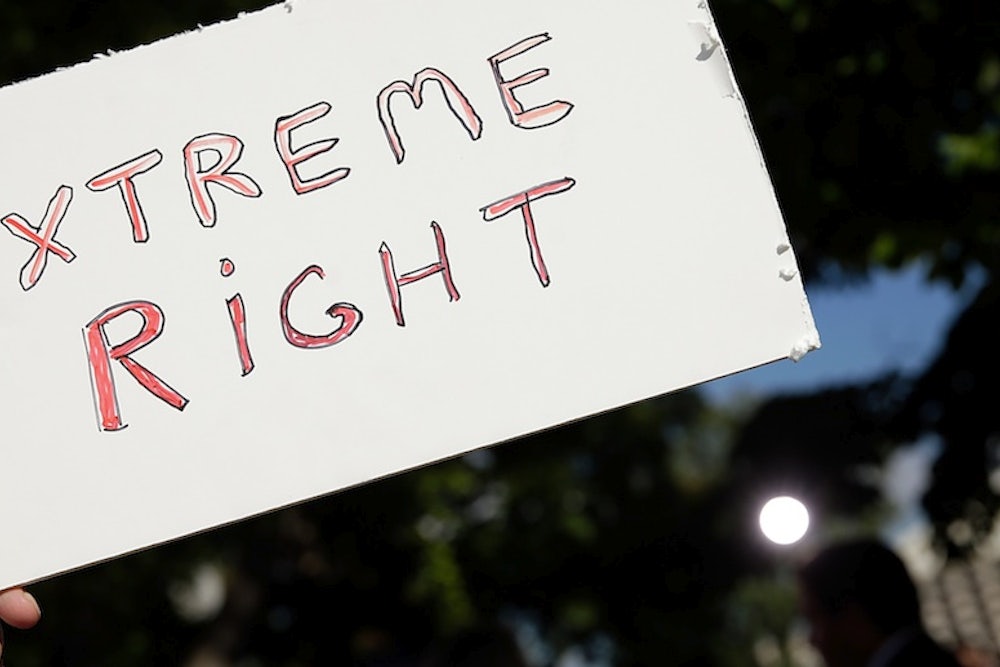The choreography of the last few weeks—the tea-party triggered impasse, the Senate compromise, and the eventual capitulation of the House GOP—must have felt familiar to anyone with memory of last winter’s fiscal cliff fight. The final act of the shutdown-debt ceiling fight stayed true to the script. The roll call vote is eerily reminiscent of last January’s fiscal cliff fight: Last January, Republicans voted against the Senate compromise, 85-151; tonight, House Republicans voted against the Senate compromise by a 87-144 margin.
Indeed, the returning representatives who voted “yes” on the fiscal cliff also voted by a 49-19 margin to raise the debt ceiling and reopen the government. The fiscal cliff “no” votes returned to vote “no” again, 28-96. New blood didn't help the cause of moderation: Fiscal cliff non-voters (mainly newcomers) voted "no," 9-28.
The underlying divisions are similar to the fiscal cliff vote, as well. Last January, commentators marveled at the outlines of a GOP civil war, between north and south, Tea party and establishment. Tonight, red state and Southern representatives voted overwhelmingly against the Senate compromise: 27-91 in the red states, 25-88 among Southern representatives. Republicans from the Northeast and Pacific voted “yes” by 30-16 margin; the blue states voted "yes," 32-17.
But compared to the fiscal cliff vote, the GOP might be even more cleanly divided along lines of vulnerability and ideology. Republicans from more competitive districts, with a Cook PVI of R+2 or more Democratic, voted almost unanimously for the Senate compromise.
Similarly, less ideological Republicans, with a DW NOMINATE score of .2 or less, voted overwhelmingly "yes." To be sure, similar Republicans were also very supportive of the fiscal cliff compromise, but, tonight, the divisions are even starker.
There is surely some temptation to wonder whether moderate districts force moderation, or whether moderate districts produce moderate candidates. The answer is probably somewhat of both. It is likely no coincidence that the most conservative Republican, as measured by DW-NOMINATE, who voted "yes" was Reid Ribble (WI-07), who represents an R+2 district. It also may not be a coincidence that the most liberal Republican to vote "no" was Walter Jones (NC-03), who represents an R+11 district--although he's a bit enigmatic. And while there's plenty of overlap between the most moderate Republicans and the most moderate districts, there are plenty of "yes" votes in conservative districts, like Mike Simpson (ID-02), or conservative "no" votes in relatively competitive territory, like Scott Garrett (NJ-05).
Either way, the divisions within the House GOP are representative of the broader divisions within the Republican electorate. A recent Pew Research survey found that Republicans are split almost neatly into thirds on the question of whether the party is compromising too much, too little, or the right amount. And while the party may be evenly divided in the aggregate, the answer in safely conservative districts is almost certainly "too much," while the moderate districts might be somewhat closer to too "little." Republicans are also split on whether the party should be more conservative or more moderate, 54-41, with just 2 percent suggesting "no change." With the rank-and-file pulling elected officials in opposing directions, it is no surprise that divisions have deepened since January. The conditions for a protracted struggle remain in place.
